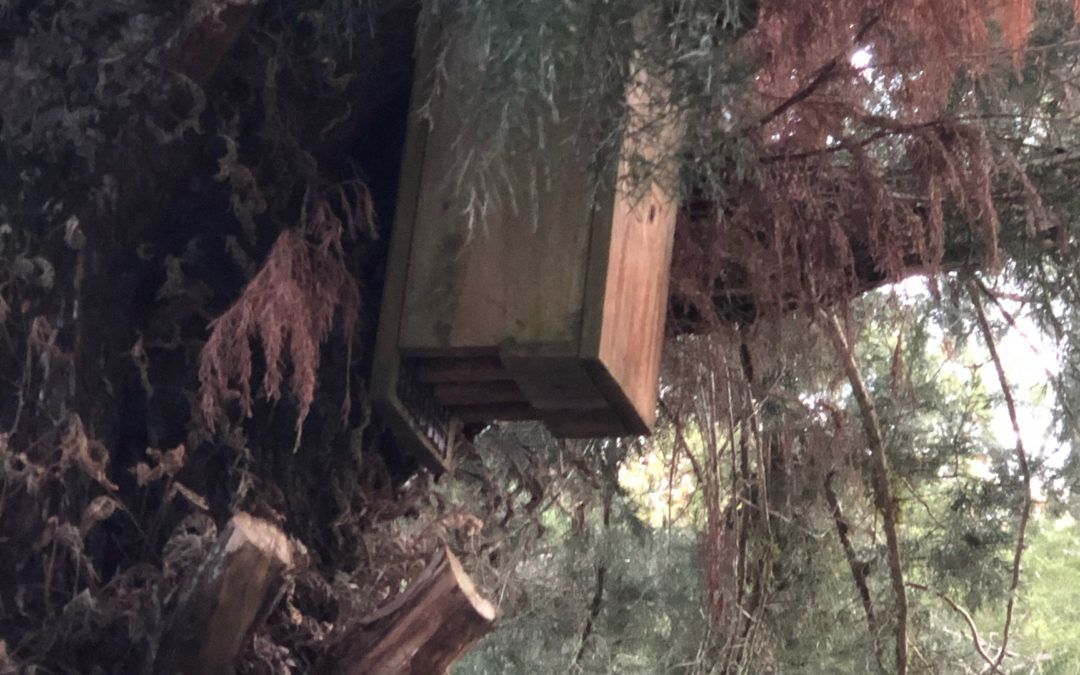Even though they are not colorful like birds and butterflies, bats play a vital role in Central Florida’s ecology. Plus, they are fun to watch and help us enjoy our backyards more because they eat thousands of mosquitos and other insects that make us want to stay indoors. When it comes to natural insect control, you cannot go wrong by inviting bats to frequent your landscape.
Ready to Roll Out the Welcome Mat for Bats? Follow These Helpful Tips.
Step 1: Choose a location that will keep them safe and comfy. Bats have predators, too, so it’s important to mount the bat house in an open area. Doing this will give them the protection they need and help the juveniles enter and exit easily. To keep snakes from invading, wrap a conical piece of flashing around the pole.
Step 2: Keep it cozy, dark, and quiet. Mounting your bat house in an open area works well to keep its temperature stable but place it in an area away from human activity because bright lights and noises are disturbing to bats.
Step 3: Pay attention to the finer details. The height and direction of the bat house matter significantly, so be sure to mount it twelve to twenty feet above the ground on the south or southeast side of a freestanding pole that is made of 4×6-inch pressure-treated wood or metal.
Step 4: Appearance is important! A bat house needs to stay between 80- and 100-degrees Fahrenheit, which is why its size and color are extremely important. Providing a large house with multiple chambers is ideal for keeping it within this temperature range. Regarding color, if your chosen location offers a limited amount of sun, choose a bat house that’s dark brown or dark grey. Although, if your bat house is mounted in the bright sun for most of the day, make sure it is light brown or light grey. Keep in mind that the bat house needs at least six hours of sunlight exposure per day.
Step 5: ‘Tis the season! Bats search for a place to roost in the early spring, which is why you want to mount your bat house during the winter months.
Step 6: Irrigation is key. To attract the tasty insects that bats crave, properly irrigating your landscape is important because mosquitos and other prey will avoid a garden that is lacking moisture.
Remember to check your irrigation system every so often to make sure it’s working properly. If you’re not sure your system is running like it should, call us or complete our request service form and we’ll be happy to take a look.
Step 7: Play it safe! Avoid treating your landscape with pesticides and herbicides because the chemicals will kill your newfound friends’ food and may even cause the bats themselves to become ill and die. Another safety precaution you need to adhere to is never touching bat feces, or guano. While it makes a great compost and fertilizer, it contains microorganisms, so always wear gloves and use a shovel when collecting it or cleaning around the base of the bat house post. IMPORTANT: Bats can carry rabies, so make sure children know to never touch a bat. If you see one on the ground alive or deceased, do not handle it and immediately contact your local animal control.
Welcome to Bat Conservation!
Bats in Florida (and everywhere) are under threat and face an uncertain future as many kinds of bats have been placed on the endangered species list. By following the above specifications, not only will you be providing Central Florida bats with a wonderful home and a garden full of yummy insects, you are contributing to their survival and the fragile ecosystem they help support.
Remember, if you ever need assistance with sprinkler repair or irrigation in the Orlando area, make sure and give us a ring!

